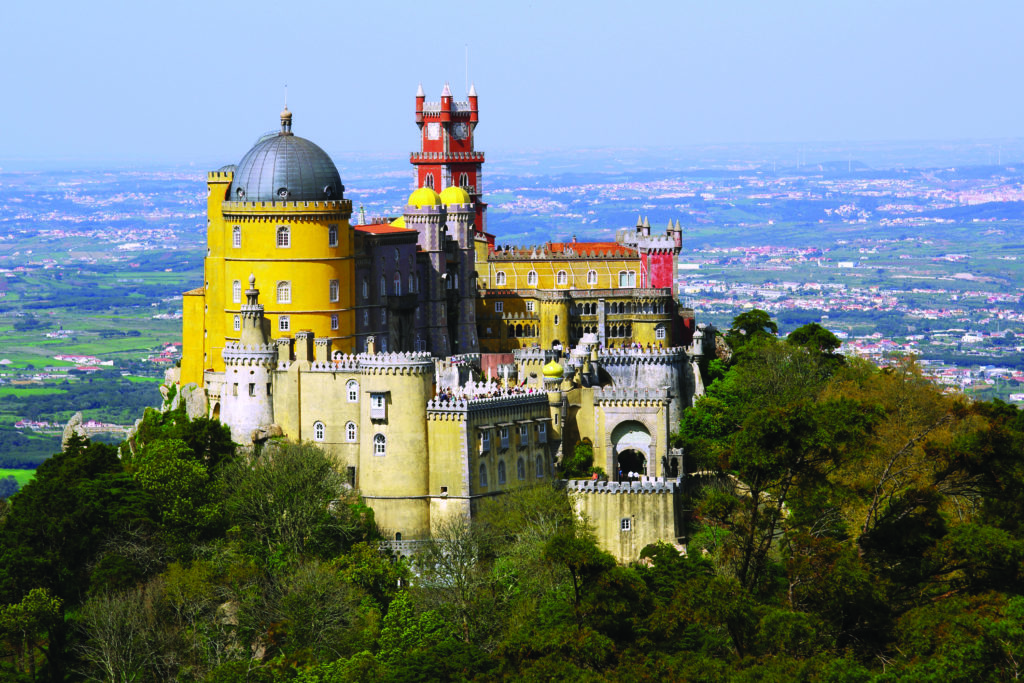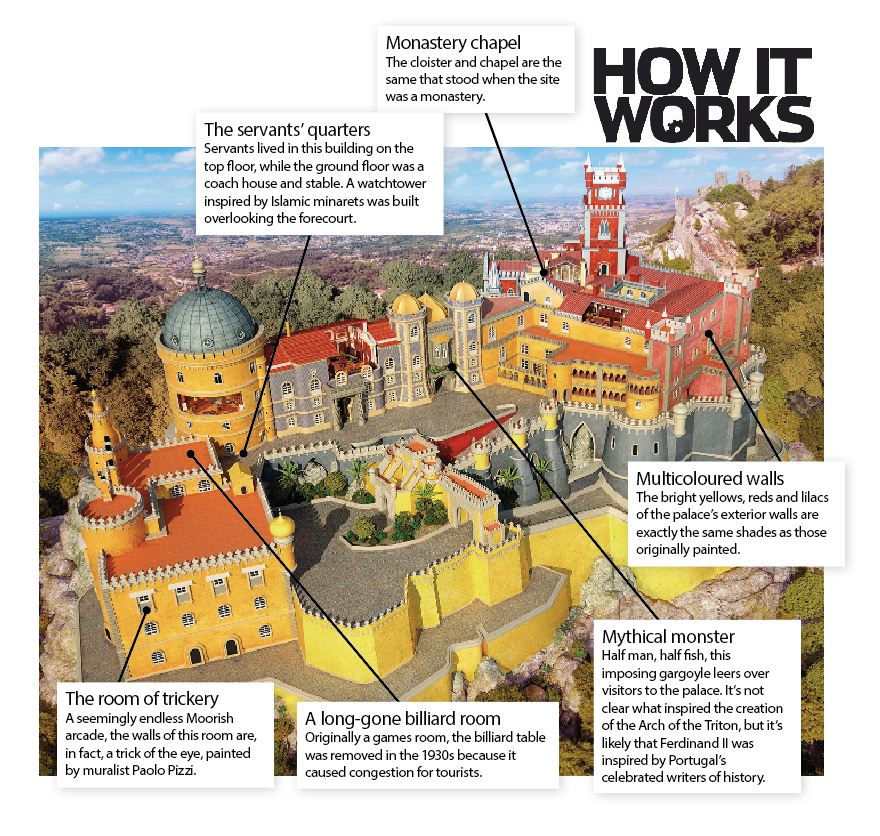Inside Portugal’s Pena Palace
by Scott Dutfield · 17/10/2020
Nestled atop a hill, this kingly home is a real-life fairytale castle in the clouds

An hour outside of Lisbon lies Sintra National Park. Tucked unobtrusively between its slopes stand some of Portugal’s most exquisite royal residences, including the Moors Castle, Monserrate Palace and Quinta da Regaleira. But none capture the imagination like the National Palace of Pena, a castle built on the top of one of Sintra’s hills by Portugal’s king of culture.
Having married Queen Maria II of Portugal in 1836, Ferdinand II was granted the title ‘king consort’ once their firstborn son arrived in 1837. In 1838 he bought the monastic ruin of Pena. Here he could realise his dream of a rural retreat from courtly life – a palace blending the old Moorish style with the new Romantic fashion.
Over 15 years the palace was built, but in 1853 tragedy struck. Maria died giving birth, leaving her 16-year-old son and heir as king. Ferdinand acted as regent for his son, but as a foreigner, he was regarded with suspicion. As his son took on more royal responsibility, Ferdinand devoted himself to his passion project, spending his final years there.
What was the Portuguese revolution?
In the wake of Ferdinand’s death in 1885, the National Palace of Pena passed from hand to hand, initially bequeathed to the king’s second wife, the countess of Edla. However, Luís I, Ferdinand’s son from his first marriage to Queen Maria II and the king of Portugal, was appalled that the palace had fallen out of royal ownership. At his insistence, the government wrangled to reclaim the residence, succeeding in 1890.
But the success was shortlived. A series of catastrophic blunders from 1890 into the 1900s left the monarchy in turmoil. In 1908 national discontent was at an all-time high when King Carlos I and his heir, Prince Luís Filipe, were shot dead in Lisbon. 18-year-old Manuel II ascended the throne, but the damage was done – after a reign of two years, defined by political unrest and revolts, the young king abdicated and fled into exile, leaving all his kingly belongings to the newly founded republic.
Of the royal palaces, some were left abandoned, others were saved as monuments, and the official residence of the last king, Necessidades Palace, was shelled. Pena Palace opened as a museum in 1911.
This article was originally published in How It Works issue 126, written by Philippa Grafton
For more science and technology articles, pick up the latest copy of How It Works from all good retailers or from our website now. If you have a tablet or smartphone, you can also download the digital version onto your iOS or Android device. To make sure you never miss an issue of How It Works magazine, subscribe today!






